I am trying to create a donut chart and am having difficulty adding color gradient. I want to be able to take all of the different categories and fade them from whatever color they are to white. Is there an easy way to do this?
data<-data.frame(count=c(39,36,19,6), category=c("a","b","c","d"))
data$fraction = data$count / sum(data$count)
data = data[order(data$fraction), ]
data$ymax = cumsum(data$fraction)
data$ymin = c(0, head(data$ymax, n=-1))
#~~~~~~~~~~~~~~~~~~~~~~~~~~~~~~~~~~~~~~~~~~~~~~~~~~~~~~~~~~~~~~~~~~~~~
#Create Plot
fill <- c("blue3","cyan3","darkgrey","forestgreen")
p1 = ggplot(data, aes(fill=category, ymax=ymax, ymin=ymin, xmax=4, xmin=3.5))
+ geom_rect(colour="White") +
coord_polar(theta="y") +
scale_fill_manual(values=fill)+
theme_bw()+
theme(panel.grid=element_blank())+
theme(axis.ticks=element_blank()) +
xlim(c(0, 4)) +
theme(axis.text=element_blank()) +
labs(title="donut plot")
print(p1)

